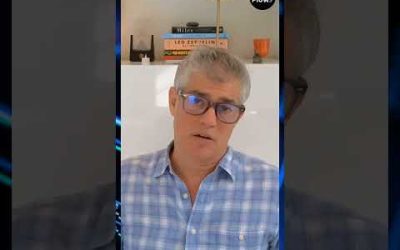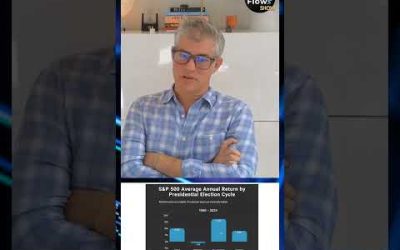by Louis Navellier
April 8, 2025
While the tariff announcements grabbed all the headlines, ADP reported on Wednesday that 155,000 private sector jobs were created in March – much higher than the economists’ consensus estimate of 120,000. The news was even better on Friday, when the Labor Department announced that 228,000 payroll jobs were created in March, well above the economists’ estimate of 140,000 payroll jobs.
Turning to some of the more downbeat details, February’s payroll jobs were revised lower, to 117,000, down from 151,000 previously reported. Also, the unemployment rate rose to 4.2% from 4.1% in February and, despite some DOGE job cuts, the Labor Department only showed a drop of 4,000 federal workers in March (more jobs will certainly be cut in April). Some “green shoots” are that average hourly earnings rose by 9 cents, or 0.3%, to $36 per hour in March and are up 3.8% in the past year. The labor force participation rate increased by 0.1% to 62.5%. Overall, due to better-than-expected job growth, the Fed may not immediately cut key interest rates at its next meeting, despite collapsing Treasury yields.
The Fed will eventually cut rates more than expected last month since we are witnessing a global interest rate collapse. There is already widespread deflation in China, so the key Chinese interest rates have fallen below Japan’s rates and are expected to settle near zero and potentially go negative for several years. Also, Eurostat reported that inflation declined to a 2.2% annual pace in Europe in March, which should encourage the European Central Bank (ECB) to cut key interest rates for the third time this year.
Further global interest rate declines will likely happen in Britain, Canada, France, Germany and Mexico, since all are in the midst of an economic recession, so their respective central banks will be slashing key interest rates further in the upcoming months. Our Fed will likely follow all of these other central banks as interest rates collapse, and as a result I am still expecting four 0.25% key interest rate cuts this year.
Why President Trump is Pushing Hard for Onshoring and More Manufacturing Jobs
Turning to other economic indicators, we can see why President Trump wants to promote more on-shoring and manufacturing jobs. On Tuesday, the Institute of Supply Management (ISM) announced that its manufacturing index declined to 49 in March, down from 50.3 in February. Since any reading below 50 signals a contraction, this represented a disappointing dip back into a manufacturing sector contraction, which had prevailed during the last two years of the Biden Presidency. Perhaps this ISM announcement influenced the urgency of the “Liberation Day” tariff talks in the Rose Garden the next day.
The ISM Manufacturing statistics had improved somewhat in the previous two months, after contracting the previous 26 months. The new orders component declined to 45.2 in March (from 48.6 in February), while the production component slipped to 48.3 in March (down from 50.7 in February). Another bad omen was that the backlog of new orders fell to 44.5 in March (down from 46.8 in February). Barely half (nine of the 16 industries that ISM surveyed in March) reported expansion during March.
Two days later, on Thursday, ISM reported that its non-manufacturing (service) index declined to 50.8 in March, down sharply from 53.5 in February. Since any reading over 50 signals an expansion, the service sector is still expanding and dominating economic growth, but 50.8 means the GDP is barely expanding.
The good news is that the business activity component remained strong at 55.9 in March (up from 54.4 in February). On the other hand, the new orders component dropped to 50.4 (down from 52.2 in February), which hindered the index. Ten of the 17 service industries ISM surveyed reported expanding in March.
In the meantime, I expect Commerce Secretary Howard Lutnick’s fantasy of having tariffs potentially replace income taxes to be severely tested. He and Peter Navarro, the White House senior counselor for trade and manufacturing, are the chief “front men” for the Trump Administration’s tariff agenda. Obviously, it would be great if higher tariffs could help reduce the trade deficit, federal budget deficit and potentially lower income taxes, but it could also limit global trading volume and perhaps global growth.
Our favorite economist, Ed Yardeni, called the Trump tariffs “insane,” so I suspect he will not be picked to replace Jerome Powell as the next Fed Chairman. In Ed’s defense, he has a lot of Wall Street clients that are clearly frustrated with the stock market sell-off, so I understand his frustration. However, there are some “green shoots” emerging, namely a collapse in Treasury bond yields, so my prediction of four Fed rate cuts this year may now come to fruition. Another green shoot is the collapse in crude oil prices, which are now at their lowest level in three years, due to concerns over global GDP growth as well as an increase in OPEC production. Clearly falling energy prices are another deflationary force.
Several Struggles Still Plague Europe’s Leaders
The big news out of France last week was the announcement that Marine Le Pen has been banned from political office for five years and sentenced to jail for four years (with a two-year suspension), meaning she cannot run for President in 2027. She was fined 100,000 euros and convicted for embezzling European Union (EU) funds. Since her National Party controls the French Parliament, her EU conviction is expected to escalate French angst against President Macron as well as the EU in Brussels.
In theory, if Ms. Le Pen could win her appeal by 2027, she could run for President, but that is not likely. As a result, the eventual collapse of the EU may be escalating, since the EU (via French President Macron) is now meddling in French politics by taking out their most popular anti-EU leader!
As for Germany, President Trump has made it crystal clear that the German auto industry is welcome to move their manufacturing to America, where they can benefit from: (1) electricity that is one-fourth the cost in Germany, (2) cheaper labor costs, (3) multiple states fighting for their business, (4) work VISAs for the employees they want to move to America, and (5) less oppressive regulations. The only other option is for Germany to comply with the European Union (EU) and just make electric vehicles (EVs).
The EU is still forcing the European auto industry to produce 100% EVs by 2035, and the German auto manufacturers do not make much money on their EVs, so they would be smart to onshore in America to make internal combustion vehicles that the majority of consumers demand. German companies Mercedes, BMW and VW Group (makers of Audi, Bentley, Lamborghini, Porsche and VW) are all exploring expanding their U.S. manufacturing plants. Now, Britain, Hungary, Italy, Poland and Sweden may follow.
Navellier & Associates; do not own Volkswagen AG Unsponsored ADR (VWAGY). Louis Navellier does not personally own Volkswagen AG Unsponsored ADR (VWAGY).
The post 4-8-25: Friday’s Jobs Report Was Bullish – On an Ultra-Bearish Market Day appeared first on Navellier.






